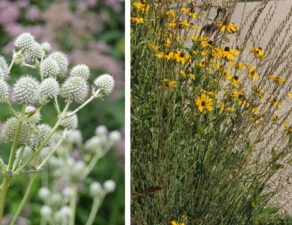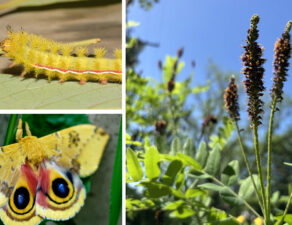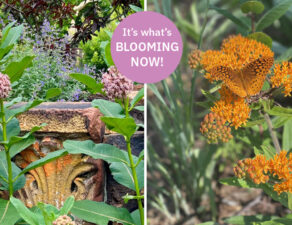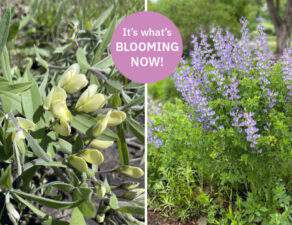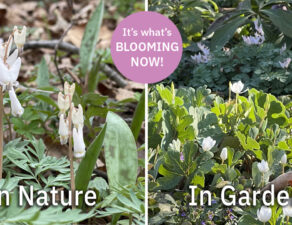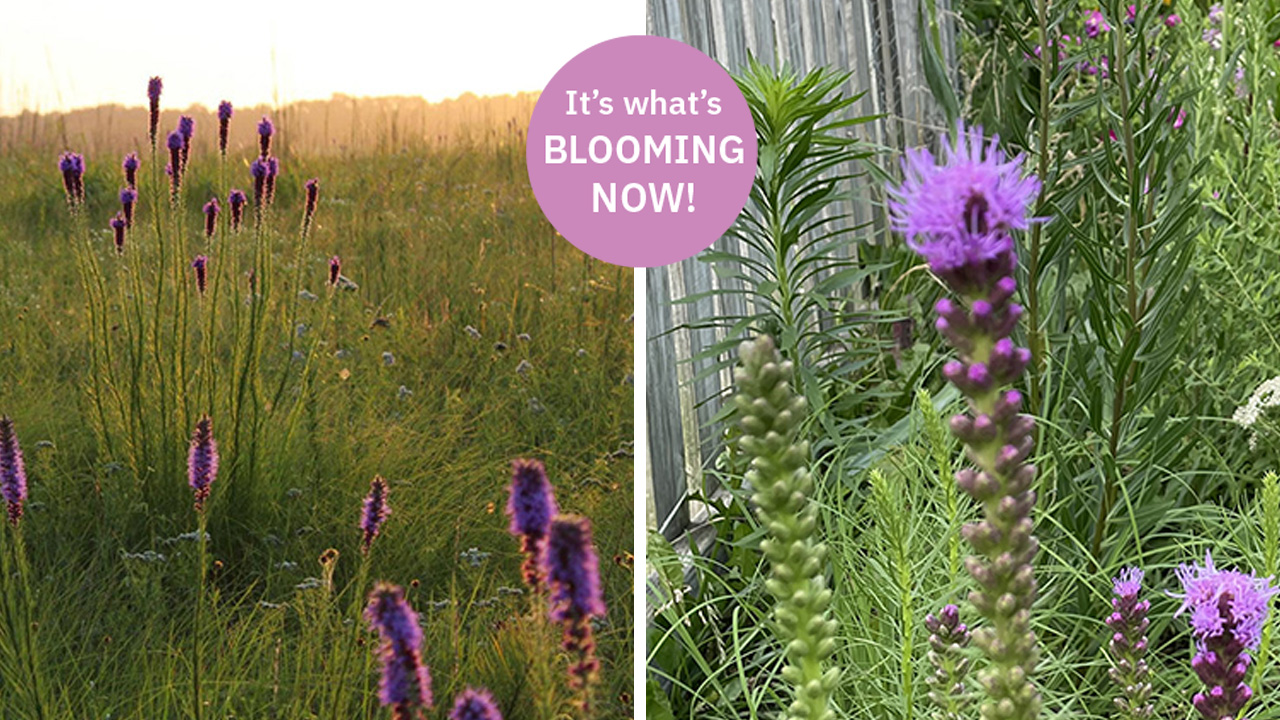
Prairie Blazing Star (Liatris pycnostachya) and Rough Blazing Star (Liatris aspera)
In Nature
Native flora and fauna have evolved intricate relationships over millennia. Some insects develop life-long relationships with plants like Monarch Butterflies (Danaus plexippus) to Milkweed (Asclepias) species. Others like the Wavy-Lined Emerald Moth (Synchlora aerata) are generalists and can feed on many plants. This captivating caterpillar is commonly found feeding on the flowers of Liatris species. Decorating their body with chewed up florets perfectly camouflages them from predators. Depending on how fresh the petals are, they look like part of the flower, or a bit of debris. Next time you’re enjoying prairie blooms, see if you can spot this fashionable friend. It takes a trained eye to find this looper caterpillar along the blooming spike of Prairie Blazing Star (Liatris pycnostachya) but it’s not impossible!
In Gardens
Nothing else looks like Prairie Blazing Star. This is the tallest of Blazing Stars grown in gardens, up to four feet tall. Mature plants can have a dozen or more stems, so in time this plant can make quite a statement in the full sun bed. The tall upright purple spikes make striking garden accents, wonderful complements in both color and form to the abundant yellow daisy-form flowers of midsummer.
But Prairie Blazing Stars would be worth growing even if they weren’t gorgeous plants, because they are butterfly magnets, absolutely covered in butterflies when in bloom.
Blazing Stars are prairie plants, thriving in any sunny situation, and many species are native to Kansas City. For gardens, Prairie Blazing Star (Liatris pycnostachya) is one of the easiest to find and grow. Although it appreciates moisture when available, it handles drought well once established, and loves heat and sun.
Early in the season, Prairie Blazing Star’s feathery spikes are a lovely contrast to other foliage. In midsummer, what appears to be lavender bristles cover the stem in a dense cylinder all around, giving it a fuzzy bottlebrush look. These last a month or more, and the waving purple wands draw butterflies like nobody’s business.
As an extra bonus, the tall vertical spikes make for prime butterfly viewing, while the purple makes a beautiful background for the orange sand blues of butterfly wings. If you like butterflies, Blazing Stars are a wonderful choice. Pair Prairie Blazing Star with later-blooming species like Eastern Blazing Star, to enjoy three solid months of butterfly frenzy.
GET TO KNOW PRAIRIE BLAZING STAR:
Light Requirements: full sun
Soil Moisture: dry to medium
Soil Description: prefers well drained soil and tolerates poor soil
Height: 2′ to 5′
Bloom Time: July – August
Bloom Color: purple, lilac
GET TO KNOW ROUGH BLAZING STAR:
Light Requirements: full sun
Soil Moisture: dry to medium
Soil Description: prefers well drained soil and tolerates poor soil
Height: 2′ to 3′
Bloom Time: August – October
Bloom Color: purple, lilac
